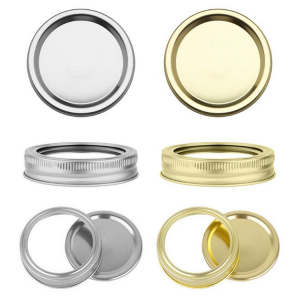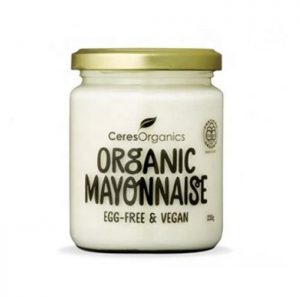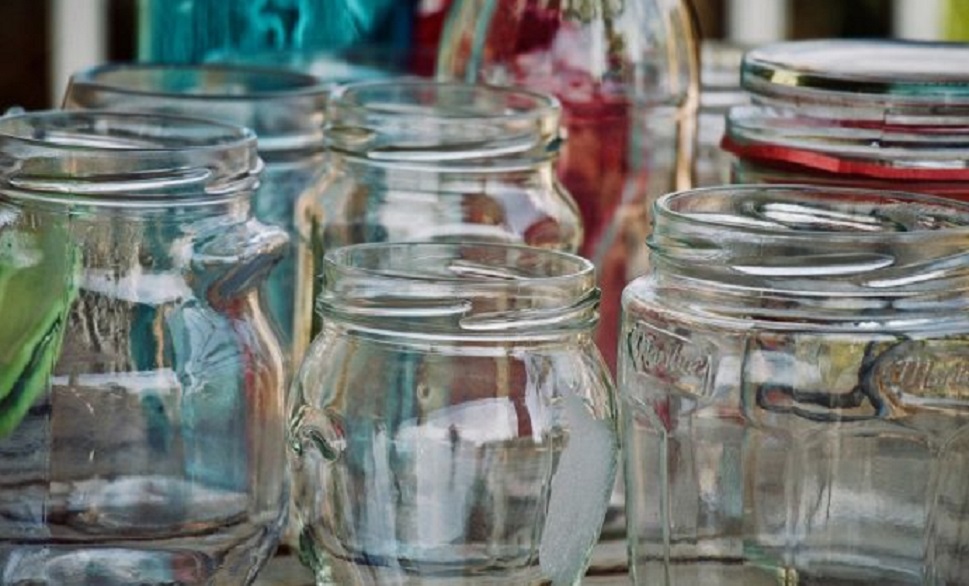What is sterilization process
Sterilization process can remove, kill, or deactivate all forms of life (in particular referring to microorganisms such as fungi, bacteria, spores, unicellular eukaryotic organisms such as Plasmodium, etc.) and other biological agents like prions present in a specific surface, object or fluid, for example food or biological culture media. Sterilization can be achieved through various means, including heat, chemicals, irradiation, high pressure, and filtration. Knowing the definition of sterilization, we will understand why we would like to sterilize glass jars for all the inside preserves. Just because a clear sterilized jar is essential to the success and longevity of the jams and preserves you spend a lot of time making. Sterilizing is a quick and easy process so therefore should never be omitted. Here are simple ways to achieve proper sterilization and make all your efforts at jam making, bottling, and canning a success.
Why sterilize glass jars
Sterilizing is a crucial part of preserving to remove any bacteria, yeasts or fungi thus protecting the food you put into the jar. Dirty or jars not correctly cleaned will infect the food inside, and it will spoil very quickly. Those are reasons to sterilize canning jars. The first reason is to kill the bacterial and micro-organisms that may be on the surface of the jar. Even if you open a fresh pack of canning jars from the store, they are not completely clean. Dust, particles, bacteria, and organisms that you cannot see, taste or smell are always among us. These bacteria combined with your foods can cause other organisms to grow that contaminated your foods. The second reason is you are putting high quality food in glass jars for long term storage. Any contaminates on the glass jars can affect the taste of the storage product. A clear jar ensures the peanuts paster will taste just as wonderful a year from now as they do when you put them in the jars.
How to sterilize glass jars
There are three trusted ways to sterilize glass jars including sterilizing canning jars in the oven, dishwash method and the microwave method. The following are three basic way steps.
Sterilize canning jars in the oven
There are some advantages of sterilizing canning jars in the oven. Heat of 220 degrees F kills bacteria and sterilize the jars. Use a dishtowel or air day the jars completely to make sure all moisture left on the glass is absorbed. The second advantage is to use the oven frees the burners on the top of the stove for boiling the lids and preparing your food.
Here are some procedures of sterilizing canning jars in the oven
- Wash jars by hand or in the dishwasher. Rinse all the soap residue thoroughly from the jars. The soap residue will cause your food to taste bad.
- Set the jars to air dry completely.
- Either place the jars on a clean cookie sheet or directly on the clean oven rack.
- Turn on the oven to 200 degrees Fahrenheit. This temperature will kill most bacteria.
- Cook the jars in the oven for at least 20 minutes. Leaving them in longer is just fine. In fact, you want to leave the jars in the oven until you are ready to fill them.
- In the meantime, prepare your foods to can. Make sure the food is nice and hot before you place them in the hot jars. Warning: If you place hot food in cold jars or cold food in hot jars, the jars have the risk of bursting.
- When you are ready to fill the jars, remove them from the oven.
- one at a time. The jars will be hot, so a clean jar handler is very useful for this task. If you do not have a jar handler, use a clean towel, or hot pad. The most important thing is to keep the jars as sterile as possible.
- You can sterilize the caps in the oven as well, but it is best to boil lids. Remember to use brand new lids for each jar.
Sterilize glass jars in the microwave
This method of sterilizing jars in the microwave is a good quick trick to have up your sleeve. Particularly if you find that you have used up all of your jars that you sterilized in the oven and still have jam, pickle and preserve waiting to be jarred! Just do not put metal lids or jars with metal clasps in your microwave. That would be very bad.
When recycling old jars, make sure you’ve removed any label that might have had any kind of metallic paint or ink on it too.
Now that we have gotten the safety stuff out of the way, the quickest way to sterilize jars in the microwave is just to wash your jar in hot soapy water, and rinse as before. Then place your wet jar in the microwave on full power for about 45 seconds (or until bone dry). Once it’s done in the microwave, make sure fill you fill the jar whilst it is still hot.
If you’re in a proverbial pickle and need to sterilize metal lids quickly, don’t worry. Even just washing them in warm soapy water then placing in a bowl of boiling water while you microwave your jars quickly is probably sufficient.

This method of sterilizing is good for regular jam jars but not the Kilner-style or for metal lids.
Clean the jars as normal, rinse but leave the jars a little wet. Microwave for 30 to 45 seconds depending on the size of the jar.

We recommend not using old jam jar lids if they are damaged or rusty, they should be thrown away as they may not make a good seal. Instead, use wax discs and cellophane or buy new lids.
Sterilize glass jars in the microwave
To sterilize jars in your dishwasher just put your dishwasher on at its maximum temperature. My dishwasher has a top heat of 70°C. Then allow it to run through a full wash and dry cycle so that the jars and lids are bone dry and still hot when you take them out. Here is my guide to plastic-free dishwasher detergent in case it is of interest!
Sterilizing jars in a dishwasher does take a bit of planning though, so be warned! Bearing in mind the jars have to be warm and bone dry when you jar up your preserve, you have to know exactly how long it takes for your dishwasher to complete a whole wash and dry cycle.
Sterilize glass jars in hot water
Wash jars in hot suds and rinse in scalding water. Put jars in a water-bath canner or on a rack set in a deep pot and cover with hot water.
Bring water to a boil and boil jars, covered, 15 minutes from time steam emerges from pot. Turn off heat and let jars stand in hot water.
Just before filling them, invert jars onto a kitchen towel to dry. (Jars should be filled while still hot.) Sterilize lids in boiling water 5 minutes.
Top Tips for Sterilizing Jars and Bottles for Preserves
As already mentioned above, do NOT add cold food to hot jars, or hot food to cold jars.
Do not use old jam jar lids if damaged or rusty, they should be thrown away as they may not make a good seal. Instead, use wax discs.
Remove jars from the oven or dishwasher only when needed or they will cool down too much.
Always sterilize more jars than you think you will need. Should you have more mixture than anticipated it is too late to start sterilizing once the food is ready.
Leave jams, preserves or pickles to settle for 15 minutes before sealing.

